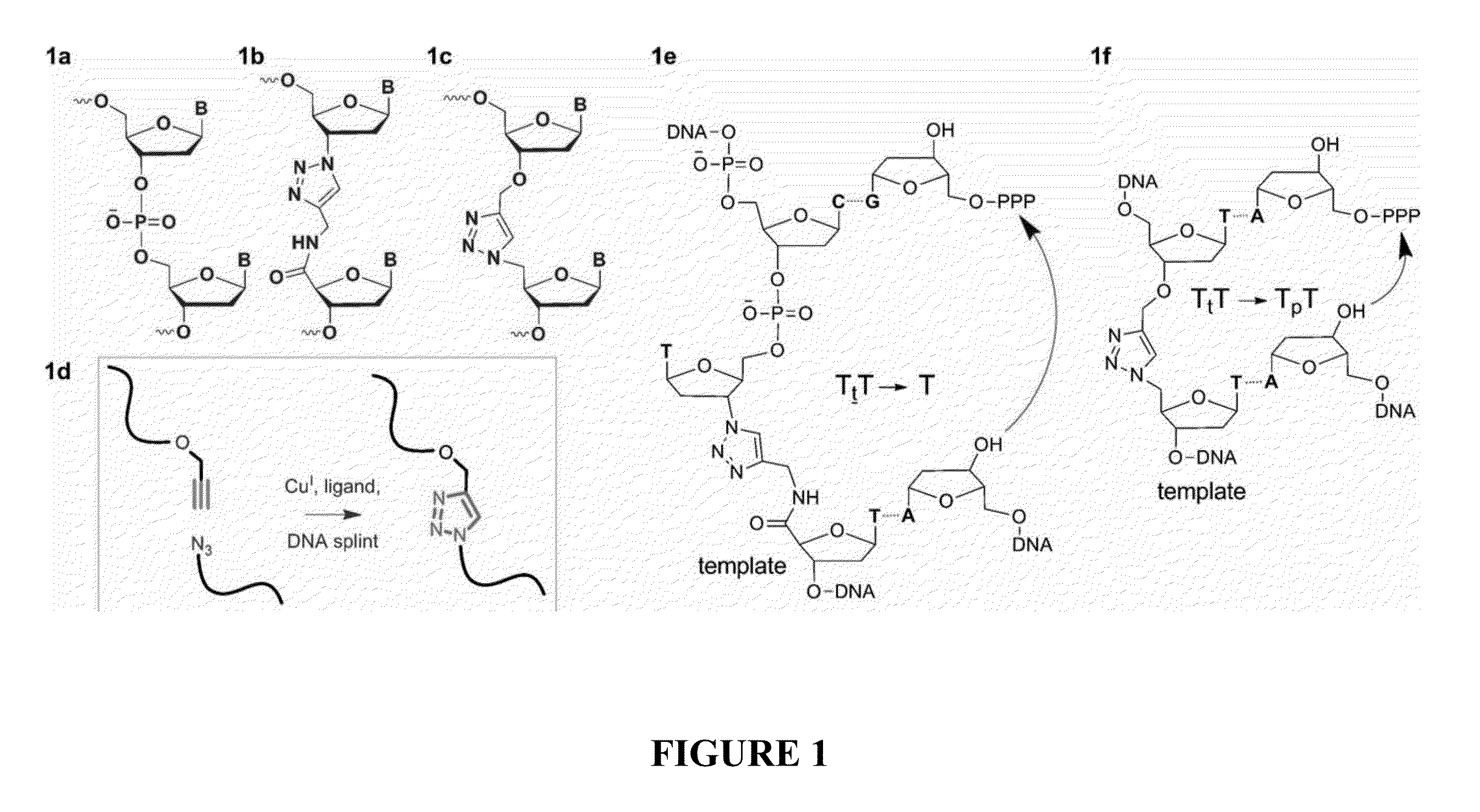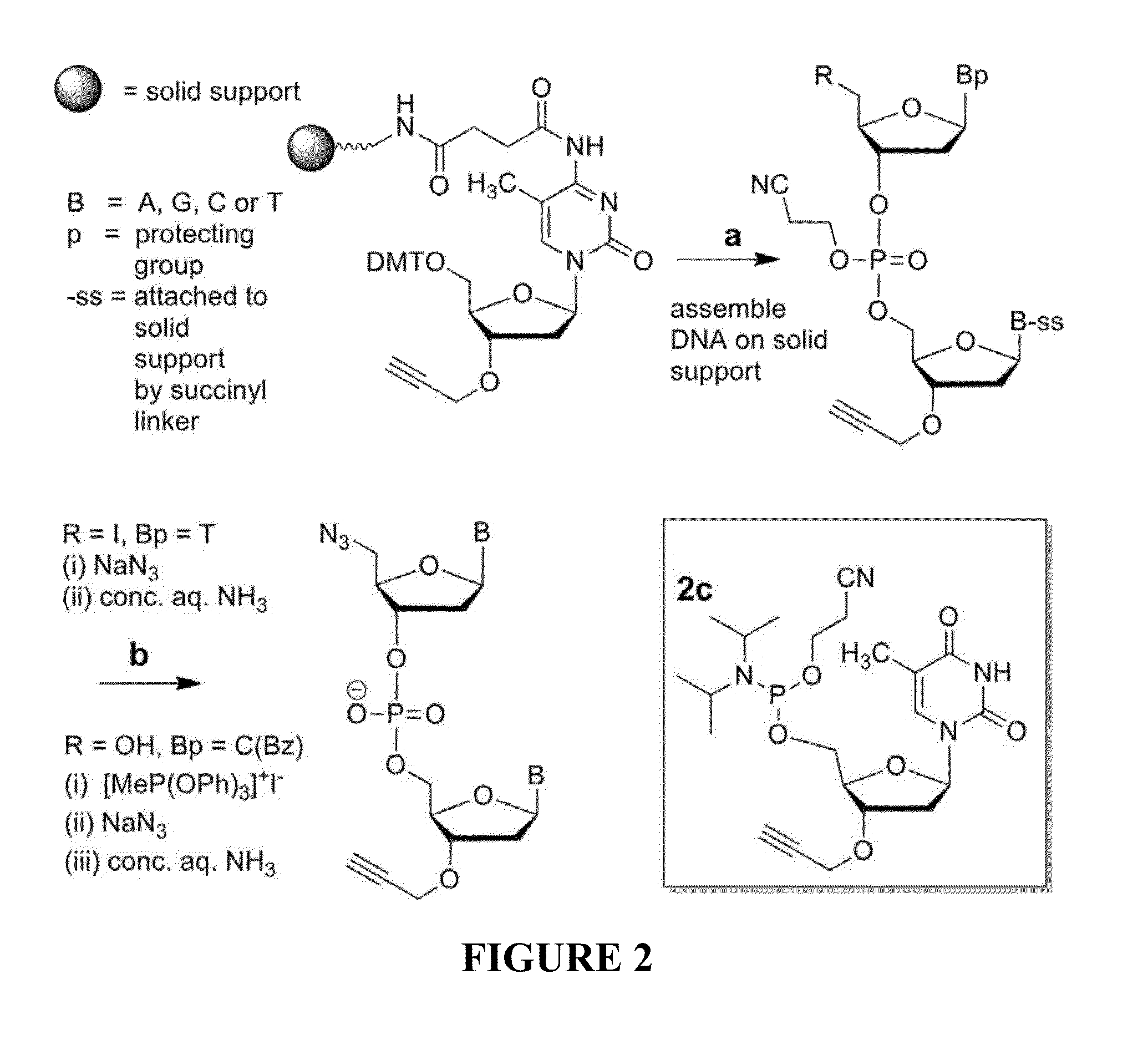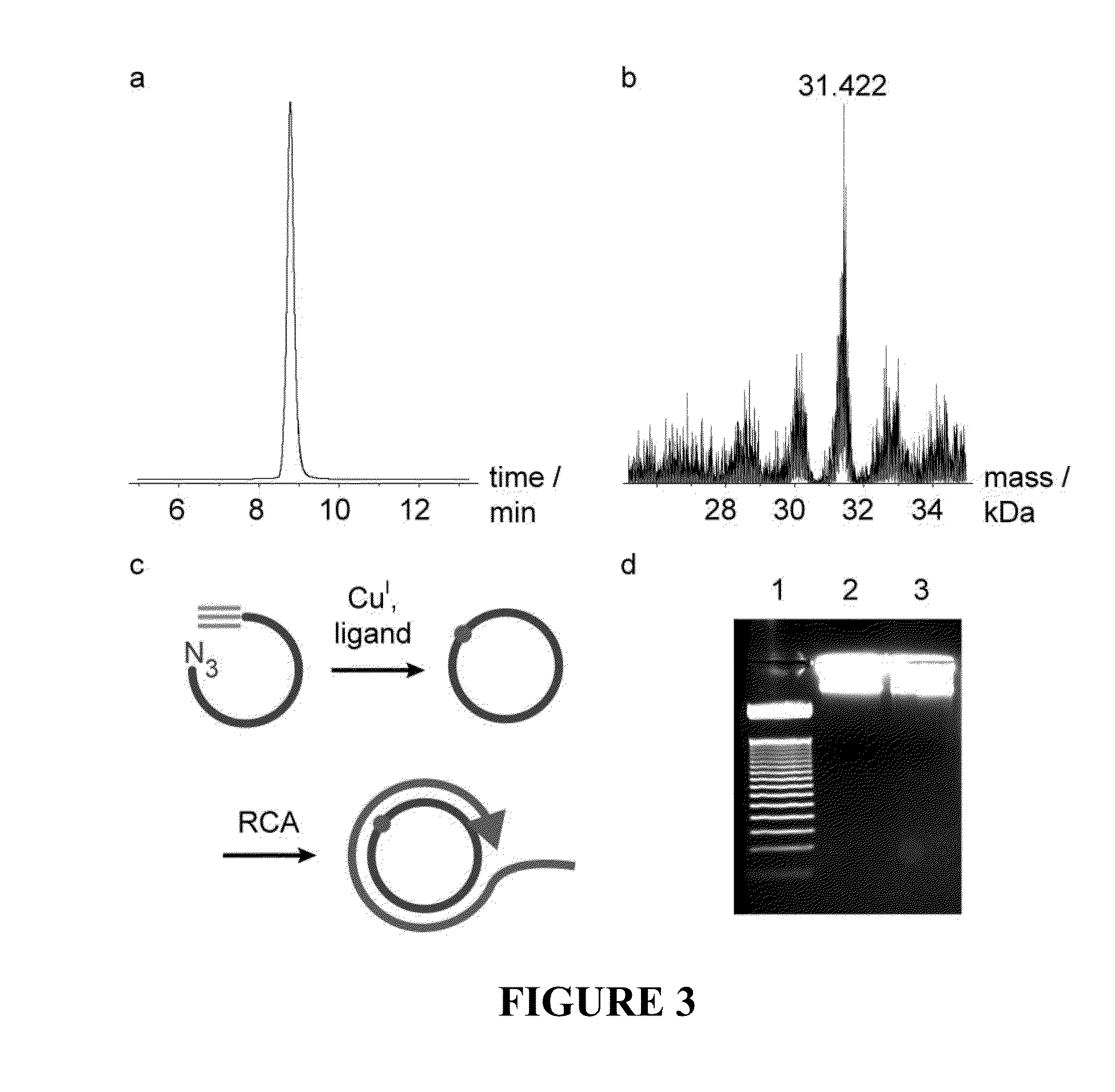Oligonucleotide ligation
a technology of oligonucleotides and ligation, which is applied in the preparation of sugar derivatives, sugar derivates, sugar derivatives, etc., can solve the problems of reducing the coupling efficiency of rna phosphoramidite monomers, and dna strands up to 150 bases in length can only be assembled by the process
- Summary
- Abstract
- Description
- Claims
- Application Information
AI Technical Summary
Benefits of technology
Problems solved by technology
Method used
Image
Examples
Embodiment Construction
[0070]A triazole mimic of a DNA phosphodiester linkage has been produced by templated chemical ligation of oligonucleotides functionalized with 5′-azide and 3′-alkyne. The individual azide and alkyne oligonucleotides were synthesized by standard phosphoramidite methods and assembled using a straightforward ligation procedure. This highly efficient chemical equivalent of enzymatic DNA ligation has been used to assemble a 300-mer from three 100-mer oligonucleotides, demonstrating the total chemical synthesis of very long oligonucleotides. The base sequences of the DNA strands containing this artificial linkage were copied during PCR with high fidelity, and a gene containing the triazole linker was functional in E. coli.
[0071]Solid-phase DNA synthesis is an advanced technology that has led to pioneering discoveries in biology and nanotechnology. Although automated solid-phase phosphoramidite synthesis is highly efficient, the accumulation of modifications (mutations) and failure seque...
PUM
| Property | Measurement | Unit |
|---|---|---|
| volume | aaaaa | aaaaa |
| volume | aaaaa | aaaaa |
| volume | aaaaa | aaaaa |
Abstract
Description
Claims
Application Information
 Login to View More
Login to View More - R&D
- Intellectual Property
- Life Sciences
- Materials
- Tech Scout
- Unparalleled Data Quality
- Higher Quality Content
- 60% Fewer Hallucinations
Browse by: Latest US Patents, China's latest patents, Technical Efficacy Thesaurus, Application Domain, Technology Topic, Popular Technical Reports.
© 2025 PatSnap. All rights reserved.Legal|Privacy policy|Modern Slavery Act Transparency Statement|Sitemap|About US| Contact US: help@patsnap.com



